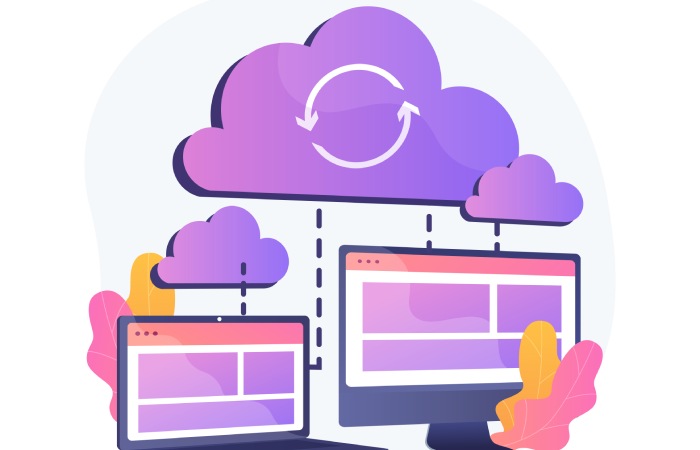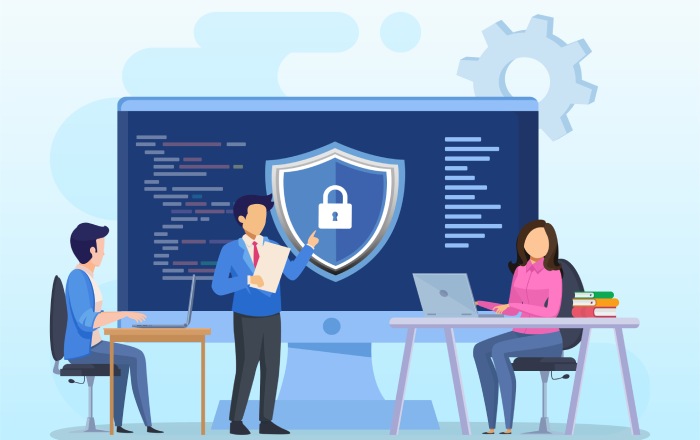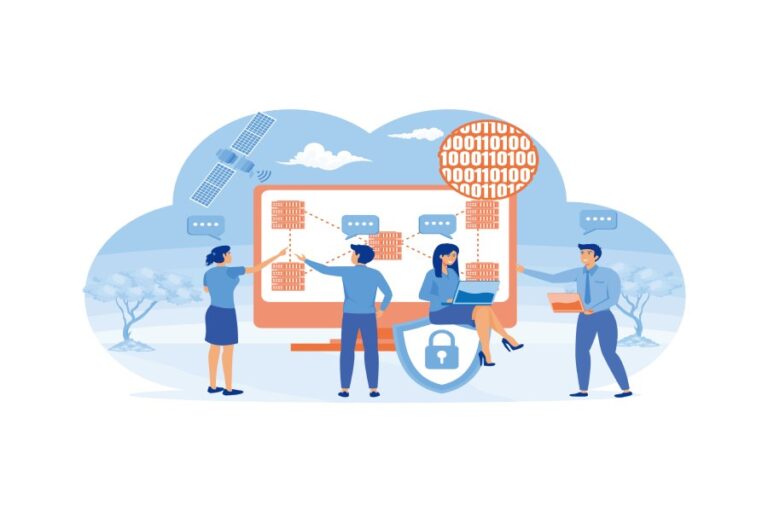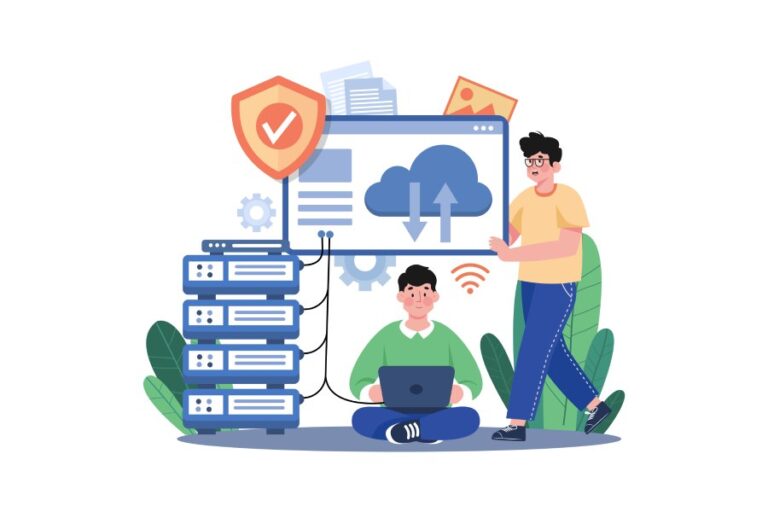10 Smart Strategies To Safeguard Your Data — Insights From DMARCReport
At DMARCReport, we understand that data is one of your organization’s most precious assets. Whether it’s customer information, financial records, or proprietary business data — a leak can be devastating. The risk of data breaches, accidental exposure, or malicious insider threats is real, and in today’s world, protecting your data isn’t just a technical necessity, it’s a business imperative.
Drawing on our expertise in email authentication and threat intelligence, here are 10 practical yet powerful strategies to protect your data. These steps aren’t theoretical; they’re actionable ways to build a multi-layered defense around your most sensitive information.
1. Fortify Your Perimeter with Firewalls
A reliable firewall remains the first line of defense for your network infrastructure. By filtering inbound and outbound traffic according to predefined rules, a firewall plays a gatekeeper role — letting legitimate communication pass while blocking malicious attempts.
At DMARCReport, we encourage implementing next-generation firewalls (NGFWs). These modern firewalls go beyond simple packet filtering: they provide deep packet inspection, application-level threat detection, and integration with threat intelligence feeds. With NGFWs, you gain:
- Better visibility into risky applications
- Real-time control over unusual traffic
- Ability to isolate or segment critical systems (e.g., database servers, domain controllers)
By intelligently configuring your firewall, you ensure your network boundary is robust — and that attackers don’t get a free pass.

2. Apply the Principle of Least Privilege via User Rights Management
One of the most common vulnerabilities is over-privileged users. When every employee has broad access, a compromised account can cause large-scale damage. User Rights Management (URM) enforces control by granting users only the permissions they need to do their job — nothing more.
Here’s how to make URM work effectively:
- Define role-based access control (RBAC) — map roles in your organization to specific access levels.
- Distribute administrative privileges across multiple administrators — don’t concentrate “superuser” power in a single person.
- Use just-in-time (JIT) access where appropriate — grant elevated access for a limited time, then revoke it.
- Regularly review and audit permissions — remove access that is no longer needed or relevant.
This reduces the risk footprint dramatically: even if an account is breached, the attacker’s access is limited.
3. Protect Non-Production Data with Data Masking
Often, data is used in non-production environments — for training, testing, or analysis. But using real customer data in these contexts is risky. Data masking helps by transforming real data into realistic—but fictitious—versions that preserve structure and usability without exposing sensitive information.
Common data masking techniques include:
- Substitution: replacing real values (like names or email addresses) with synthetic ones.
- Shuffling: rearranging data across records, which breaks the link between sensitive values.
- Tokenization: substituting real data with tokens and keeping the mapping secure.
- Encryption: encrypting certain fields so that even in test environments, the original data is inaccessible.
- Deletion: selectively removing personally identifiable or sensitive data where it’s not needed.
By using these techniques, you can share datasets internally or with third parties without exposing raw PII, while preserving analytical value.

4. Encrypt Your Data at Rest and in Transit
Masking helps with non-production usage, but for production data, encryption is indispensable. If an attacker somehow gains access to your storage or communication channels, encryption ensures that your data remains unintelligible without proper keys.
We strongly recommend:
- Encryption at rest: Encrypt file systems, databases, backups, and any storage medium. Use enterprise-grade encryption and ensure that key management is robust.
- Encryption in transit: Use TLS/SSL for all network communications — web app connections, API traffic, data replication, and internal service-to-service comms.
Key management is just as critical: store keys in a dedicated Key Management Service (KMS), restrict access to them, rotate them periodically, and audit usage. Encryption forms one of your most reliable defensive walls — especially when combined with other controls.
5. Deploy Data Loss Prevention (DLP) Solutions
To actively prevent data from leaving your organization in an unauthorized way, you need a Data Loss Prevention (DLP) solution. DLP systems monitor, detect, and even block unwanted transmission of sensitive data, whether via email, cloud storage, or other channels.
Practical DLP policies we recommend:
- Preventing outbound emails with sensitive attachments (e.g., PII, financial records) from being sent to external personal email accounts.
- Blocking or alerting when documents containing confidential fields are uploaded to non-approved cloud services.
- Restricting printing of highly confidential reports.
- Applying content inspection at endpoints to detect and stop risky data movements.
When properly tuned, a DLP tool becomes your silent watchdog, constantly guarding your most critical assets.

6. Harness User Behavior Analytics (UBA)
Threats aren’t always external — they often come from the inside, whether by compromise or misuse. User Behavior Analytics (UBA) (also called UEBA: User and Entity Behavior Analytics) leverages machine learning to create a baseline of normal user patterns, then detects deviations that might indicate risk.
Here’s how UBA adds value:
- It identifies anomalies like a user suddenly downloading a large volume of data, logging in at odd hours, or performing unusual sequences of actions.
- It can flag account compromise (e.g., brute-force attacks) or insider threats (e.g., an employee exfiltrating data).
- It feeds into your incident response: when UBA detects abnormal behavior, you can trigger alerts or even automated containment.
At DMARCReport, we highly value UBA for its proactive threat detection — especially in environments where traditional tools (firewalls, AV) might miss insider risks.
7. Perform Data Discovery and Classification
You cannot protect what you don’t know you have. Many organizations lack visibility into where their sensitive data resides. Implementing data discovery and classification gives you a map of your data landscape.
Key steps:
- Scan repositories: Use tools to scan your on-prem and cloud storage — file shares, databases, data lakes — for sensitive data.
- Classify data: Define classification categories, such as “PII,” “financial,” “proprietary,” or “unstructured public data,” and tag accordingly.
- Apply metadata: Use automatic or semi-automatic tagging so that your security and compliance systems know which data requires stronger protection.
- Maintain and review: Data isn’t static — schedule periodic re-scans and classification reviews to capture new data and changes.
When your data is classified, all your other controls — encryption, DLP, access control — become more effective, because you know exactly what you’re protecting.

8. Monitor Database Activity in Real Time
Databases are often the heart of your organization. They hold structured information that attackers love. Database Activity Monitoring (DAM) involves tracking who is accessing what, when, and how — and raising alerts for suspicious behavior.
Effective DAM implementation includes:
- Real-time logging of all database queries, especially read (SELECT) and delete (DELETE) operations.
- Defining and enforcing policies: flag unusual query patterns (e.g., mass data exports), or operations outside business hours.
- Generating audit trails: maintain logs for compliance, forensic investigation, and regulatory reporting.
- Alerting and response: integrate with your SIEM or incident response platform so that alerts trigger predefined workflows.
By monitoring inside your database layer, you gain invaluable visibility — and you can catch exfiltration attempts or malicious insiders long before damage becomes irreversible.
9. Prioritize Alerts with Risk Scoring
A major challenge in cybersecurity is alert fatigue. Security tools (IDS, SIEM, UBA) can generate hundreds or thousands of alerts, many of which are benign or false positives. Without effective prioritization, your team may drown.
At DMARCReport, we recommend:
- Assigning risk scores to alerts, based on threat context, asset criticality, and business impact.
- Automating triage: configure systems to escalate only high-risk alerts to human analysts, while low-risk ones are logged or deprioritized.
- Building a playbook: define response workflows for different alert categories, so your team knows exactly what to do when something triggers.
- Continuously tuning: update your risk scoring criteria based on what truly matters for your business (e.g., customer PII, financial databases).
By focusing on what’s most likely to harm you, rather than chasing every warning, you make your security operations more efficient — and more effective.
10. Develop a Security-First Culture
All of the technical controls — firewalls, encryption, DLP, UBA — are critical. But they are only as strong as the people and processes that support them. A security-first mindset should run through your organization, not just in IT.
Here’s how to foster it:
- Policies & governance: Define clear data security policies, access guidelines, and incident response plans. Make sure they’re documented, communicated, and enforced.
- Training & awareness: Regularly train your team on data handling best practices, phishing awareness, safe collaboration, and responding to alerts.
- Continuous assessment: Schedule regular security reviews, audits, and penetration tests. Reassess your strategy, update your threat models, and refine your controls.
- Metrics & reporting: Track key security metrics — data exfiltration attempts blocked, number of risky behaviors flagged, time to respond — and review them with leadership.
When people understand why data protection matters — not just as compliance but for business trust and risk reduction — security becomes part of everyone’s job.

Why DMARCReport Recommends These Solutions
At DMARCReport, our core focus is on email authentication and domain-based threat protection (DMARC, SPF, DKIM). But through our work, we’ve learned that email is just one piece of the puzzle when it comes to data risk. Protecting your domain from phishing and spoofing is crucial — but if your internal data systems are vulnerable, the threat remains.
By combining these 10 strategies:
- You build defense in depth: each layer compensates for the limitations of the others (e.g., DLP + encryption + UBA).
- You maintain visibility and control: with data discovery, classification, and real-time monitoring, you always know what’s happening.
- You improve operational efficiency: prioritized alerts, governance, and clear workflows reduce noise and help you respond faster.
- You strengthen your security culture: when employees understand their role in data protection, you mitigate human risk.
Final Thoughts & Call to Action
Data protection isn’t a one-time project — it’s a continuous journey. As threat landscapes evolve, so must your strategies. By following these 10 easy (and actionable) solutions, you can significantly reduce your risk, improve detection, and build trust both inside and outside your organization.
If you’d like help implementing any of these measures — whether it’s setting up data discovery tools, tuning your DLP policies, or establishing a behavior analytics system — DMARCReport is here for you. Our team of experts can guide you through architecture planning, tool selection, deployment, and ongoing monitoring.
Reach out to us today to start fortifying your data protection strategy. Let’s make sure your data is not just defended, but resilient.







